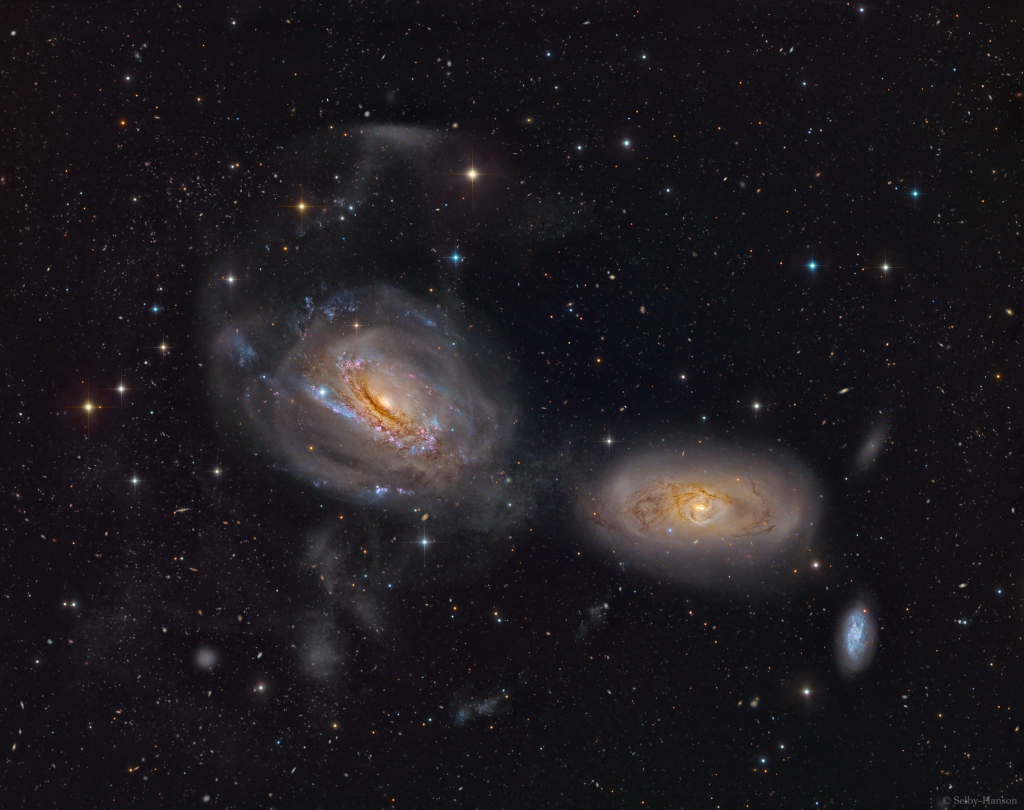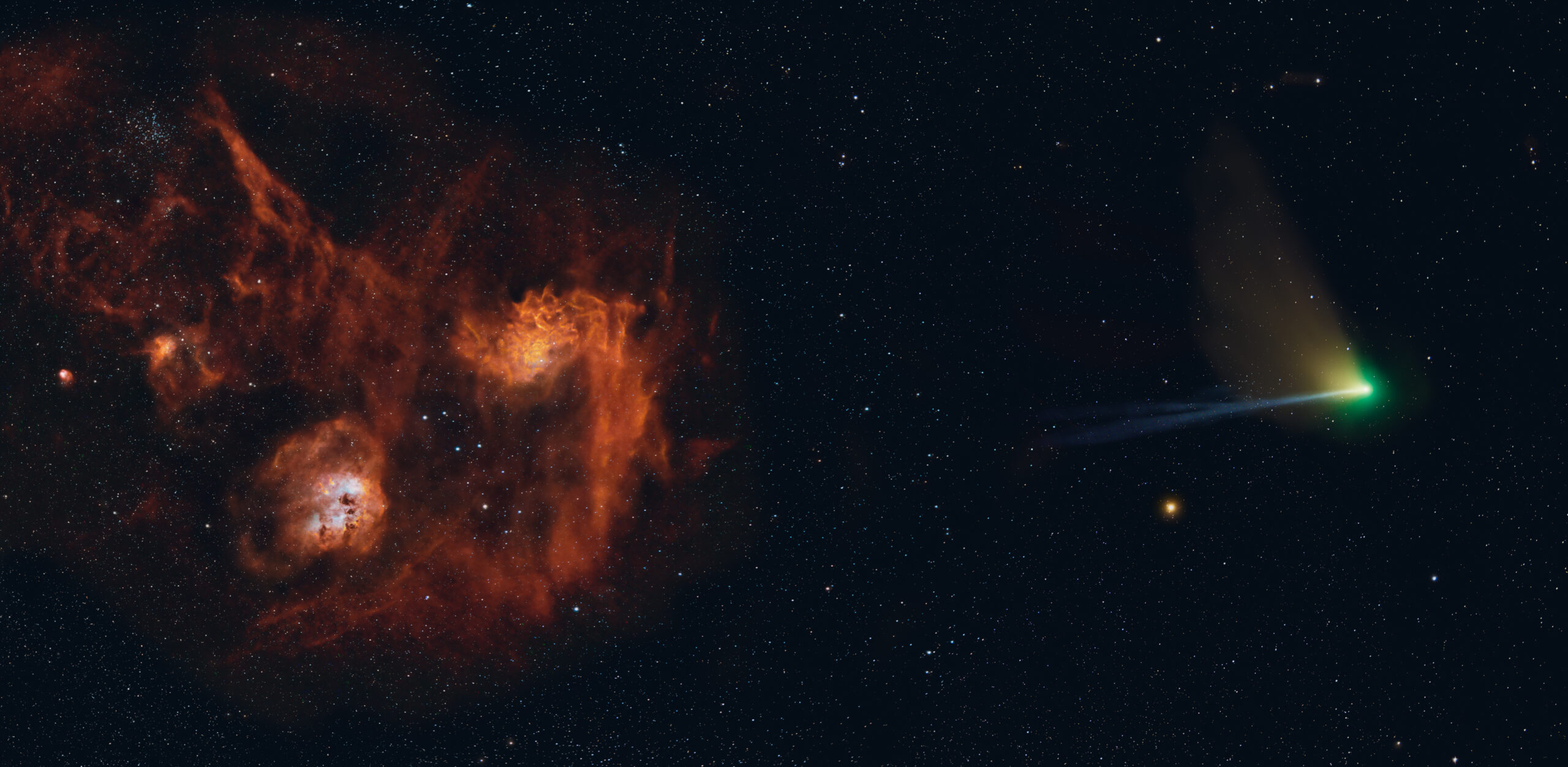Wayne Shorter, the enigmatic, intrepid saxophonist who shaped the color and contour of modern jazz as one of its most intensely admired composers, died on Thursday March 2nd 2023 in Los Angeles. He was 89.
His publicist, Alisse Kingsley, confirmed his death, at a hospital. There was no immediate information on the cause.
Mr. Shorter had a sly, confiding style on the tenor saxophone, instantly identifiable by his low-gloss tone and elliptical sense of phrase. His sound was brighter on soprano, an instrument on which he left an incalculable influence; he could be inquisitive, teasing or elusive, but always with a pinpoint intonation and clarity of attack.
His career reached across more than half a century, largely inextricable from jazz’s complex evolution during that span. He emerged in the 1960s as a tenor saxophonist and in-house composer for pace-setting editions of Art Blakey’s Jazz Messengers and the Miles Davis Quintet, two of the most celebrated small groups in jazz history.
see full post...In 185 AD, Chinese astronomers recorded the appearance of a new star in the Nanmen asterism. That part of the sky is identified with Alpha and Beta Centauri on modern star charts. The new star was visible to the naked-eye for months, and is now thought to be the earliest recorded supernova. This deep telescopic view reveals the wispy outlines of emission nebula RCW 86, just visible against the starry background,understood to be the remnant of that stellar explosion. Captured by the wide-field Dark Energy Camera operating at Cerro Tololo Inter-American Observatory in Chile, the image traces the full extent of a ragged shell of gas ionized by the still expanding shock wave. Space-based images indicate an abundance of the element iron in RCW 86 and the absence of a neutron star or pulsar within the remnant, suggesting that the original supernova was Type Ia. Unlike the core collapse supernova explosion of a massive star, a Type Ia supernova is a thermonuclear detonation on a white dwarf star that accretes material from a companion in a binary star system. Near the plane of our Milky Way galaxy and larger than the full moon on the sky this supernova remnant is too faint to be seen by eye though. RCW 86 is some 8,000 light-years distant and around 100 light-years across.

Willie Chambers (born March 3, 1938) is a singer, guitarist, and former member of The Chambers Brothers, a rock band in the 1960s with hits “In The Midnight Hour“, “I Can’t Turn You Loose“, and “Time Has Come Today“. He continues to be a regular attraction at various venues in Los Angeles and further afield.
Along with brothers Lester, Joe and George, Willie was a founding member of The Chambers Brothers and stayed with them through their evolution which included the addition of drummer Brian Keenan in 1965 and the group’s eventual breakup. He sang lead on one of their hits, a cover of Wilson Pickett‘s “In The Midnight Hour“. He also co-wrote their biggest hit “Time Has Come Today” with his brother Joe. He would later work as a session musician. More recently, he has become more active and has collaborated with artists such as Louis Metoyer. He has also been involved with Australian born artists such as Jessie Sparks and singer Stephen Rowe, appearing in his “Restless Soul” video.
see full post...Robyn Rowan Hitchcock (born 3 March 1953) is an English singer-songwriter and guitarist. While primarily a vocalist and guitarist, he also plays harmonica, piano, and bass guitar. After leading the Soft Boys in the late 1970s and releasing the influential Underwater Moonlight, Hitchcock launched a prolific solo career. His musical and lyrical styles have been influenced by Bob Dylan, John Lennon, Syd Barrett, Captain Beefheart, Martin Carthy, Lou Reed, Roger McGuinn and Bryan Ferry.
see full post...James Emory Garrison (March 3, 1934 – April 7, 1976) was an American jazz double bassist. He is best remembered for his association with John Coltrane from 1961 to 1967.
Garrison was born in Miami, Florida and moved to Philadelphia when he was 10, where he learned to play bass during his senior year of high school. Garrison came of age in the 1950s Philadelphia jazz scene, which included fellow bassists Reggie Workman and Henry Grimes, pianist McCoy Tyner and trumpeter Lee Morgan. Between 1957 and 1962, Garrison played and recorded with trumpeter Kenny Dorham; clarinetist Tony Scott; drummer Philly Joe Jones; and saxophonists Bill Barron, Lee Konitz, and Jackie McLean, as well as Curtis Fuller, Benny Golson, Lennie Tristano, and Pharoah Sanders, among others. In 1961, he recorded with Ornette Coleman, appearing on Coleman’s albums Ornette on Tenor and The Art of the Improvisers. He also worked with Walter Bishop, Jr. and Cal Massey during the early years of his career. Jimmy Garrison died of lung cancer on April 7, 1976.
see full post...Arthel Lane “Doc” Watson (March 3, 1923 – May 29, 2012) was an American guitarist, songwriter, and singer of bluegrass, folk, country, blues, and gospel music. Watson won seven Grammy awards as well as a Grammy Lifetime Achievement Award. Watson’s fingerstyle and flatpicking skills, as well as his knowledge of traditional American music, were highly regarded. Blind from a young age, he performed publicly both in a dance band and solo, as well as for over 15 years with his son, guitarist Merle Watson, until Merle’s death in 1985 in an accident on the family farm.
Watson was born in Deep Gap, North Carolina. According to Watson on his three-CD biographical recording Legacy, he got the nickname “Doc” during a live radio broadcast when the announcer remarked that his given name Arthel was odd and he needed an easy nickname. A fan in the crowd shouted “Call him Doc!”, presumably in reference to the literary character Sherlock Holmes‘s companion, Doctor Watson. The name stuck.
see full post...
“Taranto” is a flamenco style whose origin is in Almería. It derives from the “taranta”, but it follows a rhythm. That makes possible to dance it, in the same way as “zambra mora”. “Taranto” comes from the mining area of Almeria. First singer this style was Pedro Morato but it’s important to quote “El Cabogatero” (1810-1880) and “El Ciego de la Playa” (born around 1840). We must also mention Juan Diaz Abad “Chilares”, born in 1868 in Zapillo, Almeria. “Taranto” is included in “cantes mineros” (fandango, taranto and taranta) and was developed in Almeria, in flamenco evenings, between the 19th and 20th centuries, in three cafes: “Frailito” (Plaza de Santo Domingo), “España” (C/Sebastián Perez, today General Rada), and “Lyon de Oro”.
Flamenco club “El Taranto” is responsible for maintaining this tradition. Regarding the dance, Carmen Amaya is considered as the mother of “Taranto”. “Taranto” was also related to styles of the region of Murcia, whose link was mining lifestyle and singers as El Morato and Chilares, who lived in Cartagena and Almeria. Rojo el Alpargatero lived in Almeria most of his life. There were also influences with Jaén, Linares and La Carolina. The “taranteros” and miners were together with the most famous singers from Jaen such as Basilio, Los Heredia, el Bacalao, Cabrerillo, el Tonto Linares. The bond was the mining railway between Linares and Almeria. There were quite flamenco’s influences between Almería and Málaga. In 1881, the great singer La Rubia de Málaga was hired by the Almería casino. Her stay there would explain that the singing of “El Ciego de la Playa” influenced to the malagueña of “El Canario”, lover of La Rubia de Málaga. It was also learned by Antonio Chacón when he went to Almería to know its flamenco singings.
see full post...
Spiral galaxy NGC 3169 looks to be unraveling like a ball of cosmic yarn. It lies some 70 million light-years away, south of bright star Regulus toward the faint constellation Sextans. Wound up spiral arms are pulled out into sweeping tidal tails as NGC 3169 (left) and neighboring NGC 3166 interact gravitationally. Eventually the galaxies will merge into one, a common fate even for bright galaxies in the local universe. Drawn out stellar arcs and plumes are clear indications of the ongoing gravitational interactions across the deep and colorful galaxy group photo. The telescopic frame spans about 20 arc minutes or about 400,000 light-years at the group’s estimated distance, and includes smaller, bluish NGC 3165 at the right. NGC 3169 is also known to shine across the spectrum from radio to X-rays, harboring an active galactic nucleus that is the site of a supermassive black hole.

Lewis Allan Reed (March 2, 1942 – October 27, 2013) was an American musician, songwriter, and poet. He was the guitarist, singer, and principal songwriter for the rock band the Velvet Undergroundand had a solo career that spanned five decades. Although not commercially successful during its existence, the Velvet Underground became regarded as one of the most influential bands in the history of underground and alternative rock music. Reed’s distinctive deadpan voice, poetic and transgressive lyrics, and experimental guitar playing were trademarks throughout his long career.
Having played guitar and sung in doo-wop groups in high school, Reed studied poetry at Syracuse University under Delmore Schwartz, and had served as a radio DJ, hosting a late-night avant garde music program while at college. After graduating from Syracuse, he went to work for Pickwick Recordsin New York City, a low-budget record company that specialized in sound-alike recordings, as a songwriter and session musician. A fellow session player at Pickwick was John Cale; together with Sterling Morrison and Angus MacLise, they would form the Velvet Underground in 1965. After building a reputation on the avant garde music scene, they gained the attention of Andy Warhol, who became the band’s manager; they in turn became something of a fixture at The Factory, Warhol’s art studio, and served as his “house band” for various projects. The band released their first album, now with drummer Moe Tucker and featuring German singer Nico, in 1967, and parted ways with Warhol shortly thereafter. Following several lineup changes and three more little-heard albums, Reed quit the band in 1970.
see full post...Larry Eugene Carlton (born March 2, 1948) is an American guitarist who built his career as a studio musician in the 1970s and 1980s for acts such as Steely Dan and Joni Mitchell. He has participated in thousands of recording sessions, recorded on hundreds of albums in many genres, including more than 100 gold records, as well as for television and movies. He has been a member of the jazz fusion group the Crusaders, the smooth jazz band Fourplay, and has maintained a long solo career.
Carlton was born in Torrance, California, United States, and at the age of six began guitar lessons. His interest in jazz came from hearing guitarist Joe Pass on the radio, after which he moved on to jazz guitarists Barney Kessel and Wes Montgomery, and blues guitarist B.B. King. He went to junior college and Long Beach State College while playing professionally at clubs in Los Angeles.
see full post...Edward F. Davis (March 2, 1922 – November 3, 1986), known professionally as Eddie “Lockjaw” Davis, was an American jazz tenor saxophonist. It is unclear how he acquired the moniker “Lockjaw” (later shortened in “Jaws”): it is either said that it came from the title of a tune or from his way of biting hard on the saxophone mouthpiece. Other theories have been put forward.
Davis played with Cootie Williams, Lucky Millinder, Andy Kirk, Eddie Bonnemère, Louis Armstrong, and Count Basie, as well as leading his own bands and making many recordings as a leader. He played in the swing, bop, hard bop, Latin jazz, and soul jazz genres. Some of his recordings from the 1940s also could be classified as rhythm and blues.
see full post...Papa Lightfoot, also known as Papa George Lightfoot (March 2, 1924 – November 28, 1971), born Alexander Lightfoot, was an American blues singer and harmonica player.
Born in Natchez, Mississippi, Lightfoot recorded several sessions in his late twenties – for Peacock Recordsin 1949 (which were never issued), Sultan Records in 1950, Aladdin Records in 1952, and Imperial Records in 1954. After final singles for Savoy Records in 1955 and Excello Records in 1956, Lightfoot quit recording, still an obscure Southern blues harmonica player.
see full post...Even though AE Aurigae is named the Flaming Star and the surrounding nebula IC 405 is named the Flaming Star Nebula, and even though the nebula appears to some like a swirling flame, there is no fire. Fire, typically defined as the rapid molecular acquisition of oxygen, happens only when sufficient oxygen is present and is not important in such high-energy, low-oxygen environments such as stars. The bright star AE Aurigae occurs near the center of the Flaming Star Nebula and is so hot it glows blue, emitting light so energetic it knocks electrons away from surrounding gas. When a proton recaptures an electron, light is emitted, as seen in the surrounding emission nebula. Captured here three weeks ago, the Flaming Star Nebula is visible near the composite image’s center, between the red Tadpole Nebula on the left and blue-tailed Comet ZTF on the right. The Flaming Star Nebula lies about 1,500 light years distant, spans about 5 light years, and is visible with a small telescope toward the constellation of the Charioteer (Auriga).

Winston Rodney OD (born 1 March 1945), better known by the stage name Burning Spear, is a Jamaican roots reggae singer-songwriter, vocalist and musician. Burning Spear is a Rastafarian and one of the most influential and long-standing roots artists to emerge from the 1970s.
Winston Rodney was born in Saint Ann’s Bay, Saint Ann, Jamaica. As a young man he listened to the R&B, soul and jazz music transmitted by the US radio stations whose broadcasts reached Jamaica. Curtis Mayfield is cited by Rodney as a major US musical influence along with James Brown.Rodney was deeply influenced as a young man by the views of the political activist Marcus Garvey, especially with regard to the exploration of the themes of Pan-Africanism and self-determination. In 1969, Bob Marley, who was also from Saint Ann, advised Rodney to approach Coxsone Dodd‘s Studio One label after Rodney sought his advice during a casual conversation.
Burning Spear was originally Rodney’s group, named after a military award given by Jomo Kenyatta, the first President of an independent Kenya, and included bass singer Rupert Willington. The duo auditioned for Dodd in 1969 which led to the release of their debut single “Door Peep” (the session also included Cedric Brooks on saxophone). They were then joined by tenor Delroy Hinds. The trio recorded several more singles for Dodd, and two albums, before they moved on to work with Jack Ruby in 1975. Their first recording with Ruby, “Marcus Garvey”, was intended as an exclusive track for Ruby’s Ocho Rios–based Hi-Power sound system, but was released as a single, giving them an immediate hit, and was followed by “Slavery Days”. These recordings featured the backing band The Black Disciples, which included Earl “Chinna” Smith, Valentine Chin, Robbie Shakespeare and Leroy Wallace. The group worked with Ruby on their third album, Marcus Garvey (1975), which was immediately successful and led to a deal with Island Records to give the album a wider release.
see full post...